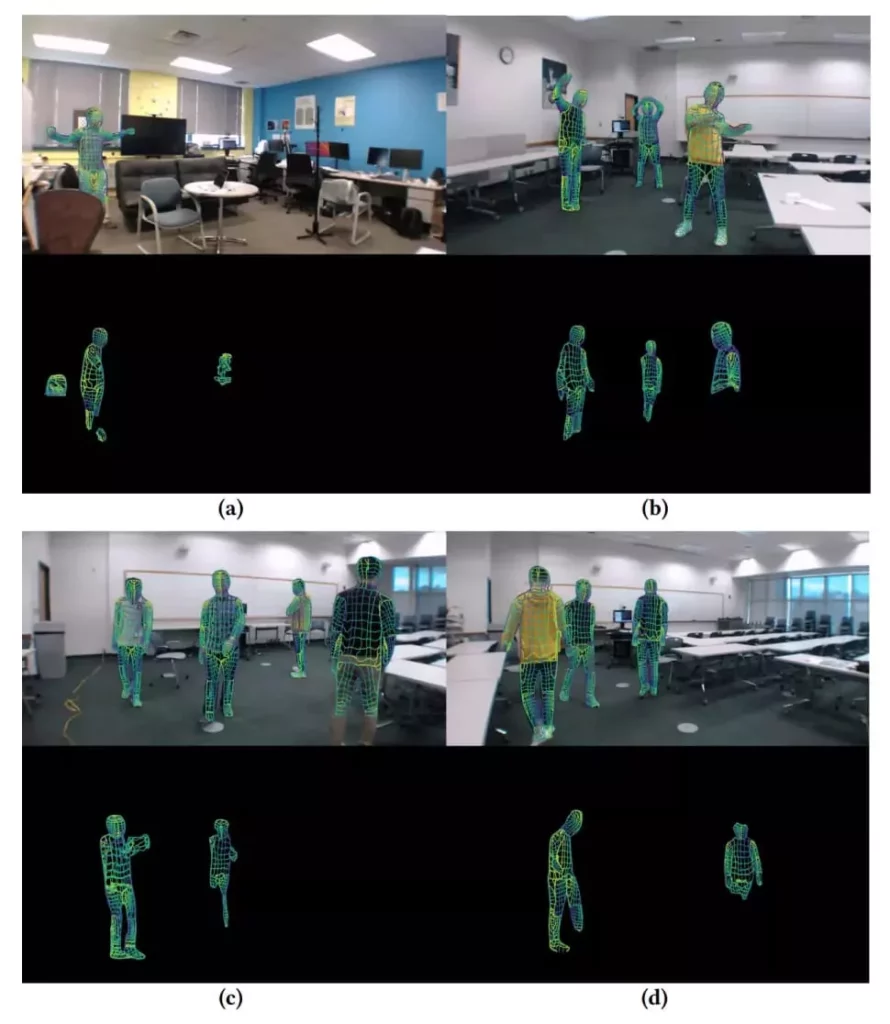With the help of several cheap Wi-Fi routers and artificial intelligence, you can spy on someone through the walls of your house or detect an intruder… Let’s find out how it works.
Researchers at Carnegie Mellon University have developed an observation system based on Wi-Fi signals. The device is able to determine the position and movements of the human body in real time, even through the walls of the building. As the 3D images presented by the researchers show, it is possible to easily observe the movements of several people.

How can you observe a person using Wi-Fi?
Specifically, the technology analyzes how bodies interfere with Wi-Fi signals. Like a piece of furniture or a wall, a person interferes with the propagation of the signal emitted by the router. Depending on its size, shape and thickness, the body affects the signal in different ways, which is a kind of fingerprint.

Interference caused by bodies can be intercepted using channel state information (CSI). This is a set of data that shows how a signal propagates from transmitter to receiver. This information allows the transmission to be adapted to the signal propagation path. During the tests, several low-cost routers, the TP-Link Archer A7 AC1750, were placed at both ends of the room. After the equipment was installed, people moved through the space covered by the Wi-Fi network.
Artificial Intelligence That Learns
To analyze the interference created by human bodies, researchers rely on artificial intelligence. A deep artificial neural network was developed. It develops and learns in the same way as the human brain. After training, the AI was able to understand and detect the presence of the body among the Wi-Fi signals.
When developing the algorithms, Carnegie Mellon specialists used DensePose, an AI created using Meta. It was designed to create a three-dimensional map of the human body based on a photograph or video. This open-source algorithm has helped AI move from a simplified 2D representation to an accurate 3D illustration of people in the field of action of a Wi-Fi network. To facilitate data analysis, the researchers broke down the human body into 24 different segments. This approach made it possible to accelerate the processing of data by artificial intelligence.
The researchers note that their solution has not yet been fully developed. But still, sometimes there are failures, especially when a person makes unusual movements that are more difficult for artificial intelligence to understand. Failures also occur if there are too many people in the room.
The novelty turned out to be more reliable than traditional surveillance cameras. Unlike a camera, the combination of Wi-Fi and artificial intelligence can detect a person hiding behind furniture or a wall. In addition, detection is independent of ambient lighting. It is possible to detect a body in total darkness. The technology is also cheaper than tools such as radar or lidar sensors, the U.S. researchers note:
Radar and lidar technologies require expensive and energy-intensive specialized equipment.
What About Users’ Privacy?
Of course, researchers are not going to “spy” on people comfortably located on the couch. Instead, the system is designed to detect possible intrusions, such as a burglar in a home, without violating the privacy of the occupants. According to the engineers, their technology “paves the way for inexpensive, widely available and confidential algorithms”:
Most households in developed countries already have Wi-Fi at home, and this technology can be used to monitor the well-being of the elderly or simply to identify suspicious behavior in the home.
This isn’t the first time Wi-Fi has been used as a remote monitoring device. In 2016, researchers from Northwestern Polytechnic University in China introduced a similar technology. This device also made it possible to track the presence of one or more people using Wi-Fi through the walls of the house. Chinese innovations have gone even further by guessing a person’s personality by the properties of their body. The system could identify a family member of six with an accuracy of more than 85%.
In contrast, the technology developed by Carnegie Mellon University is not able to identify a person walking in the Wi-Fi range. That’s why their solution, which combines Wi-Fi and AI, is “privacy-friendly,” the engineers note.





0 Comments